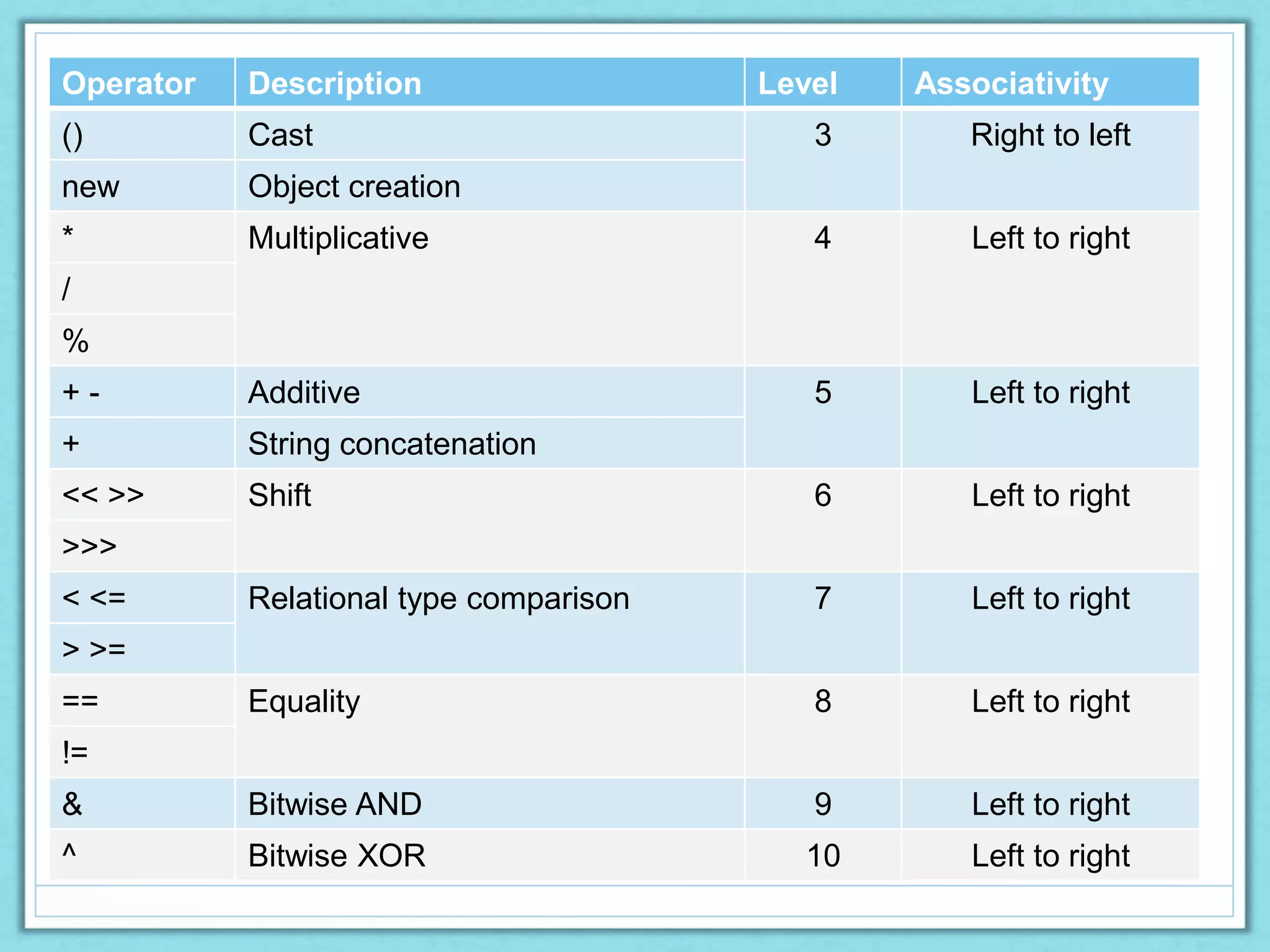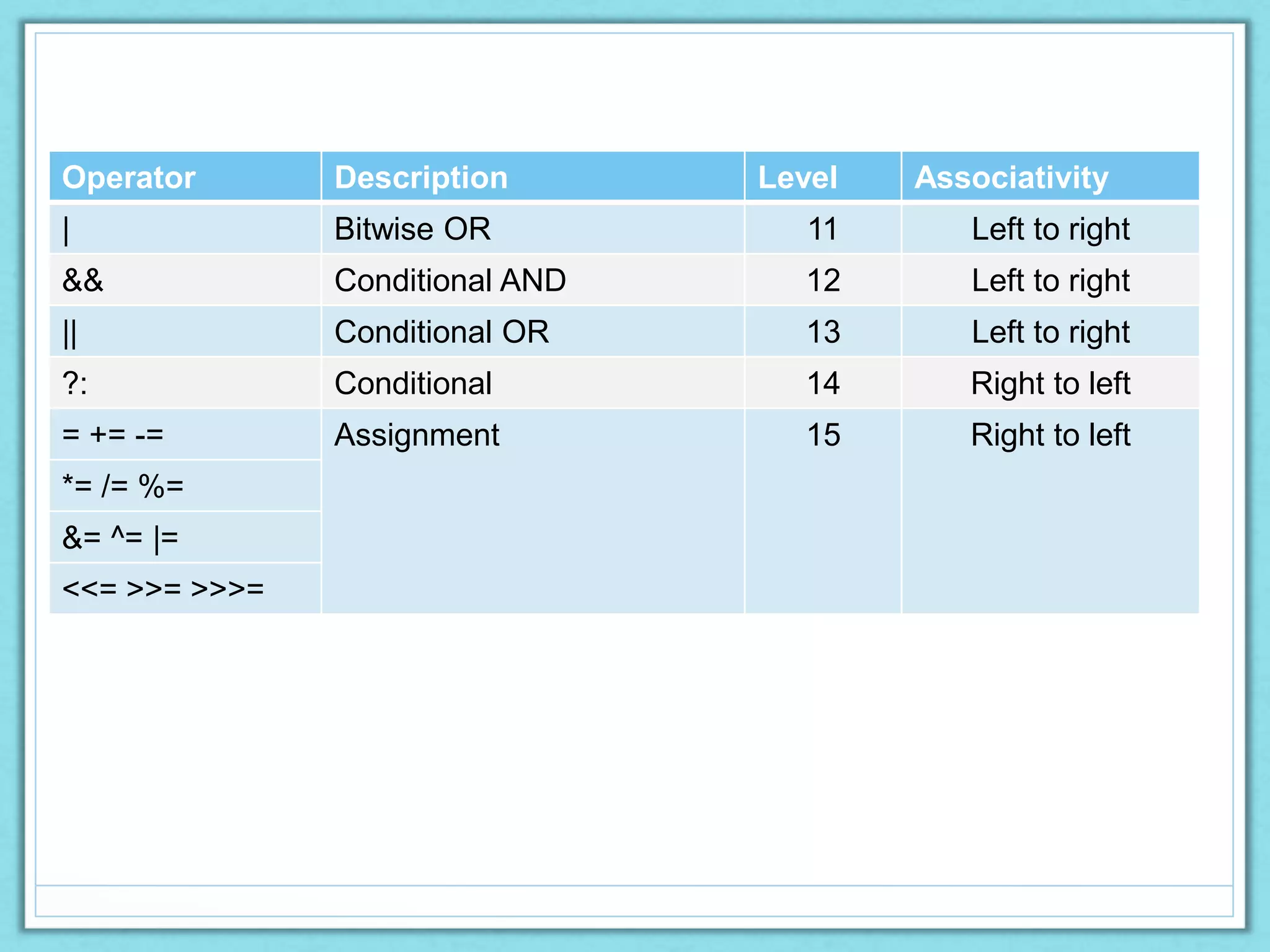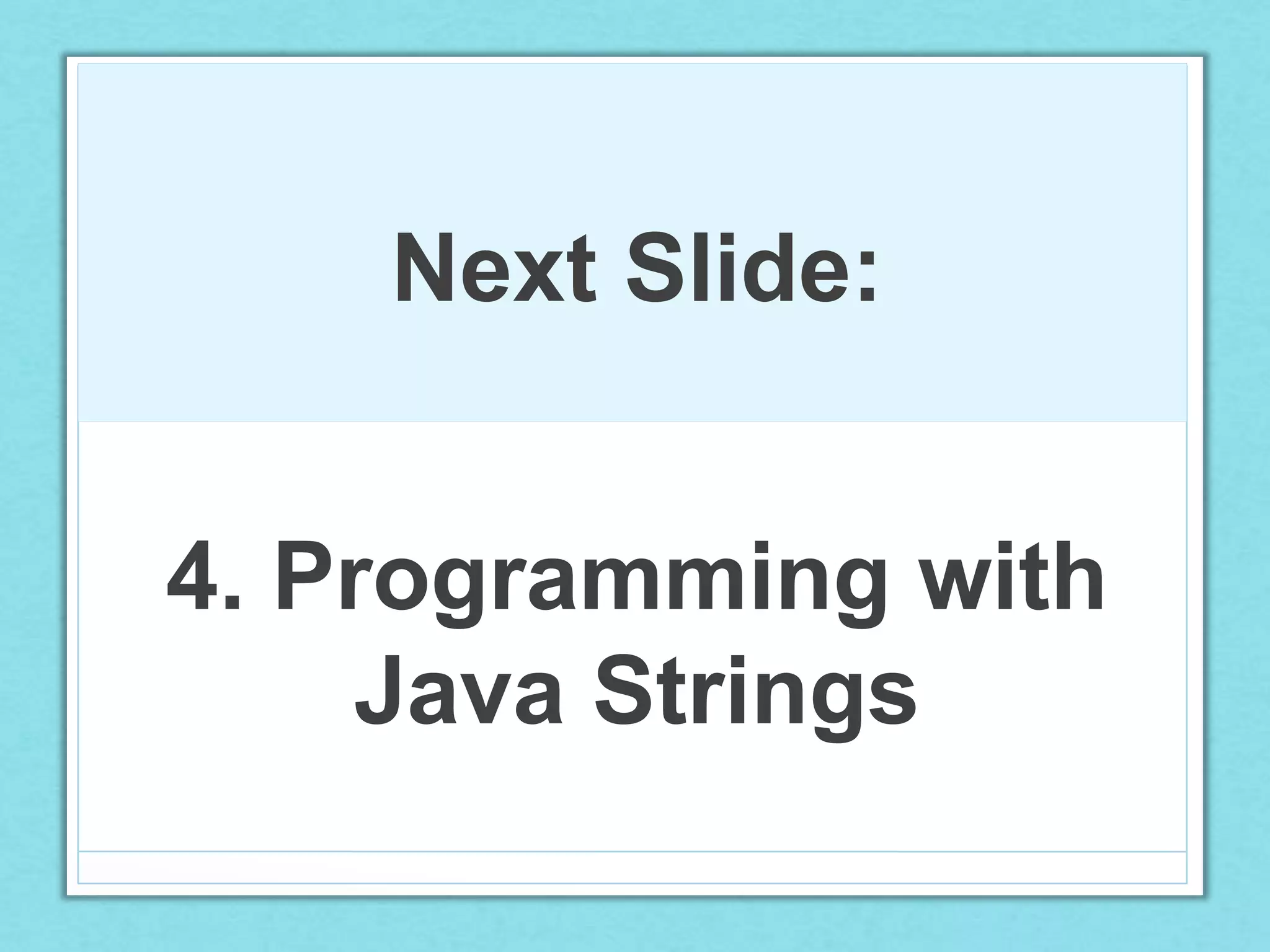This document provides an overview of Java operators, including fundamental, assignment, arithmetic, relational, equality, logical, and precedence operators. It explains how these operators function, their usage with different operands, and the concept of operator precedence and associativity in Java. Additionally, it emphasizes the importance of understanding these operators for effective programming in Java.
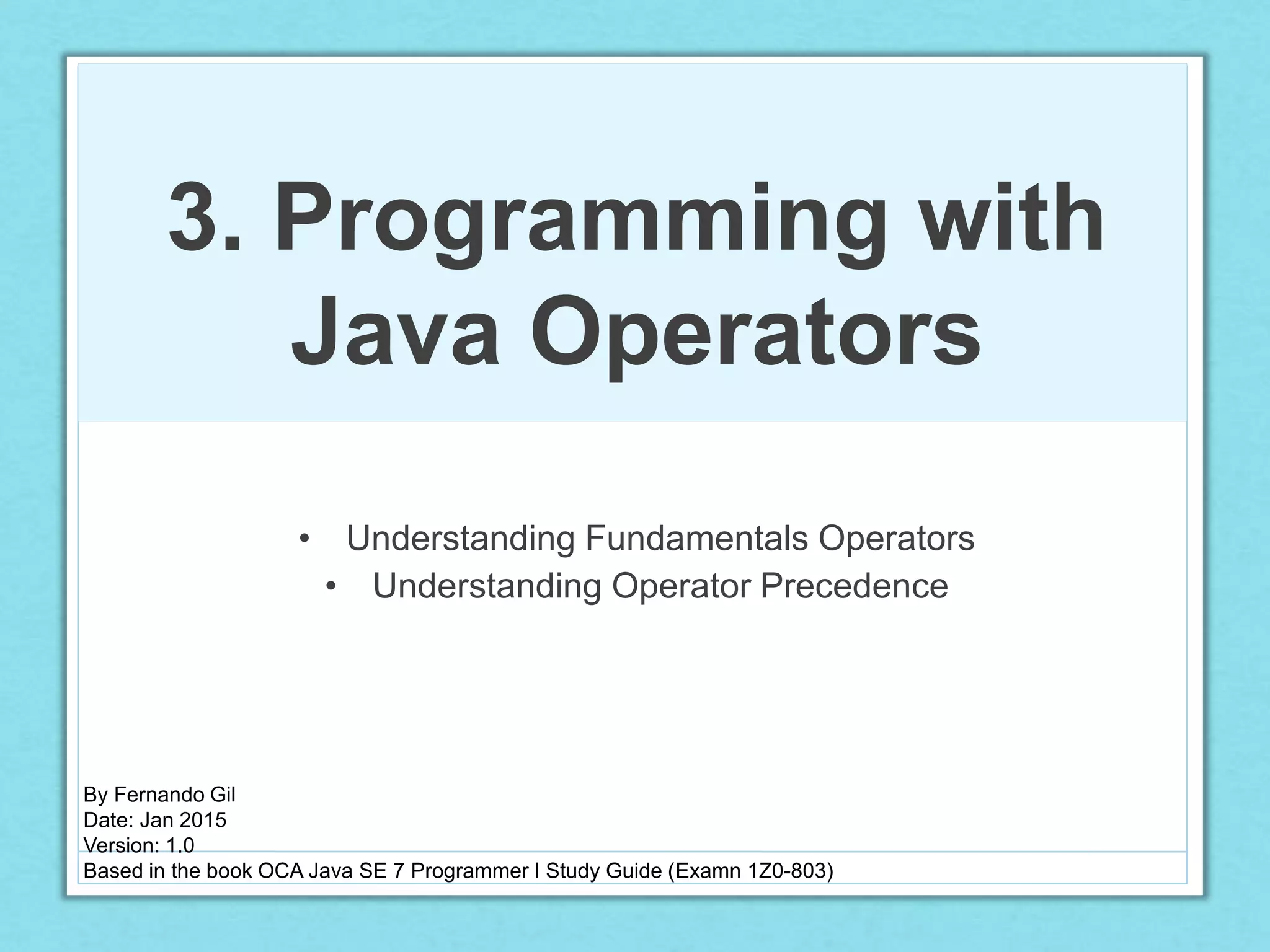
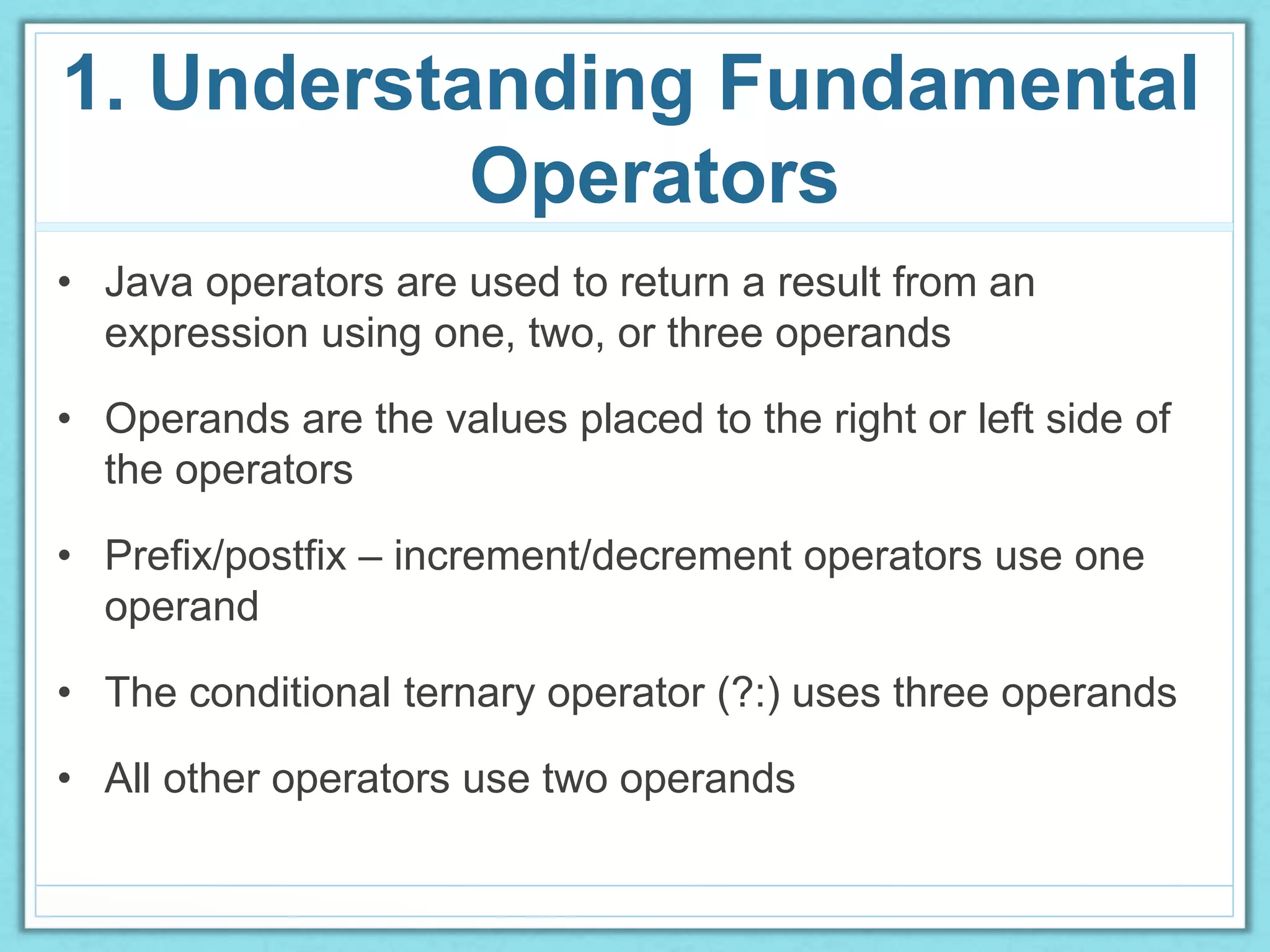
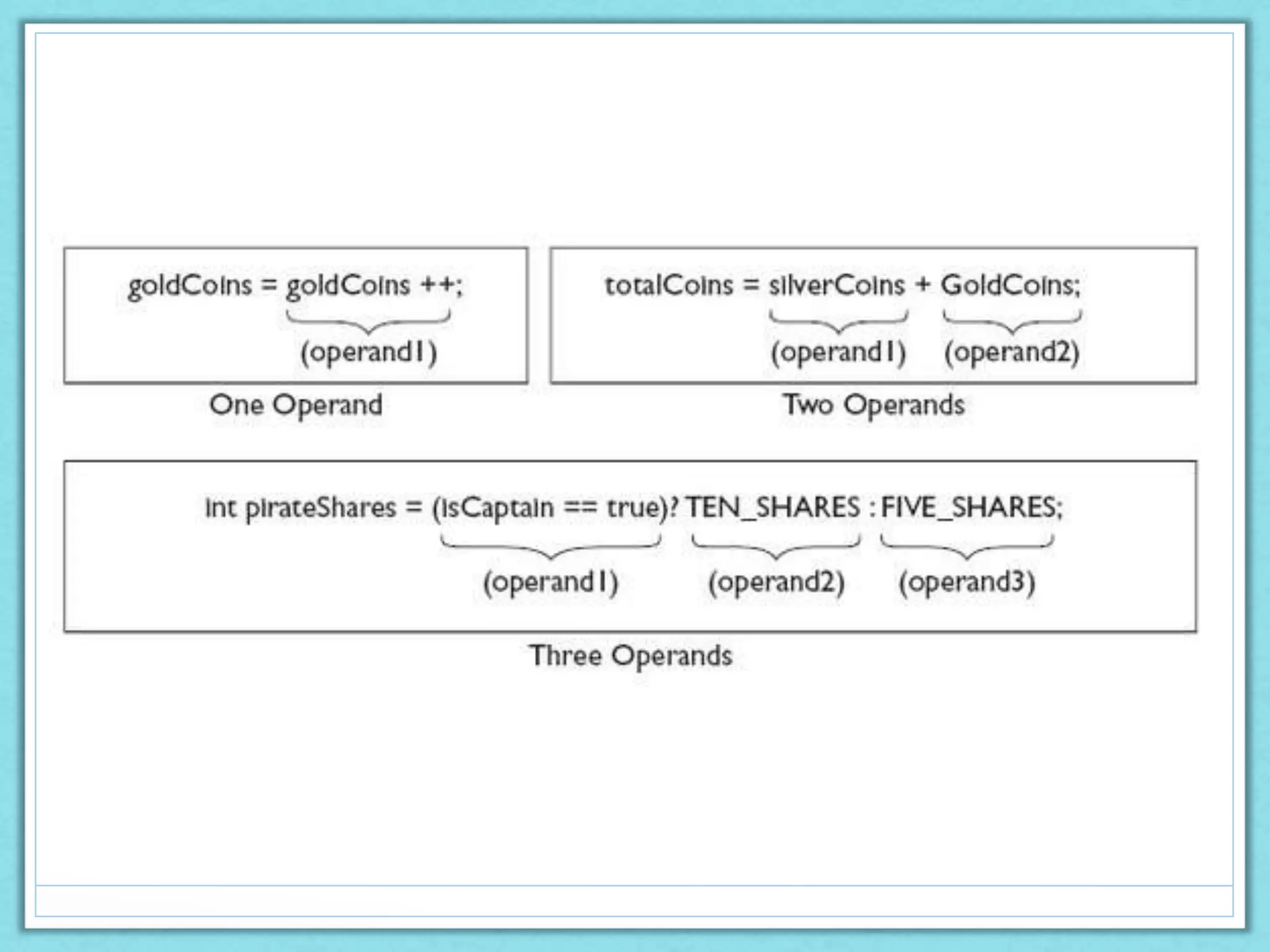
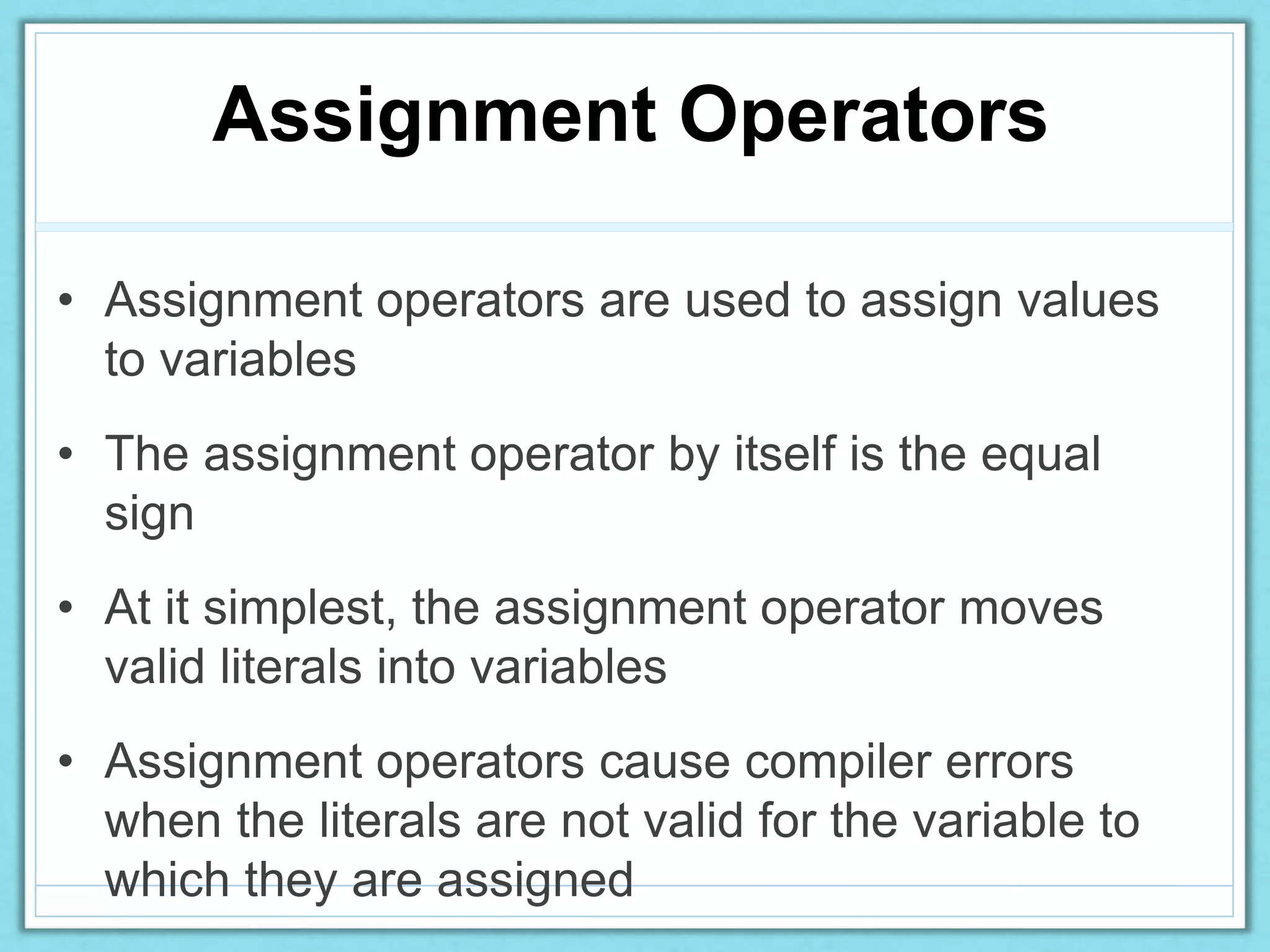
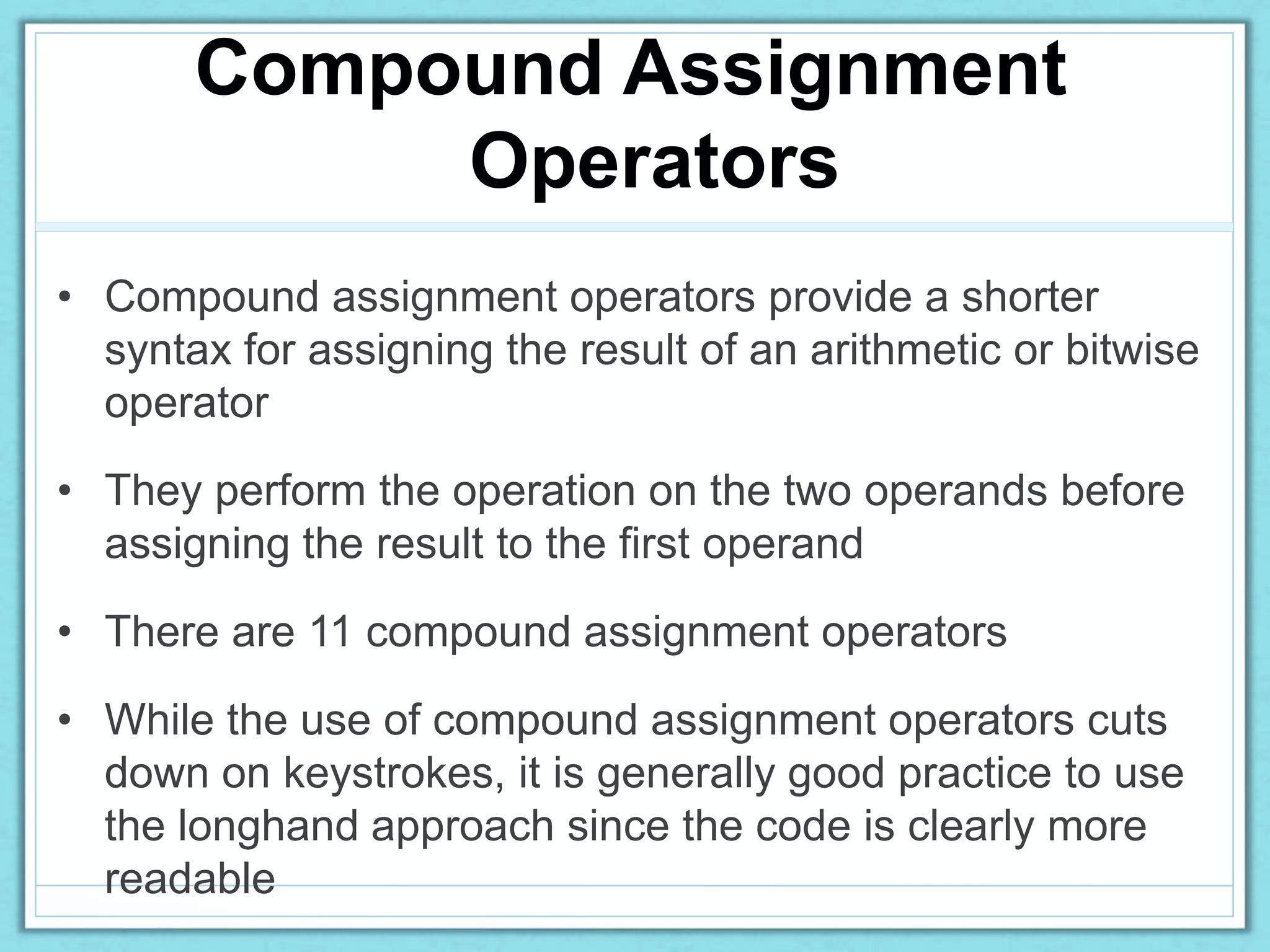
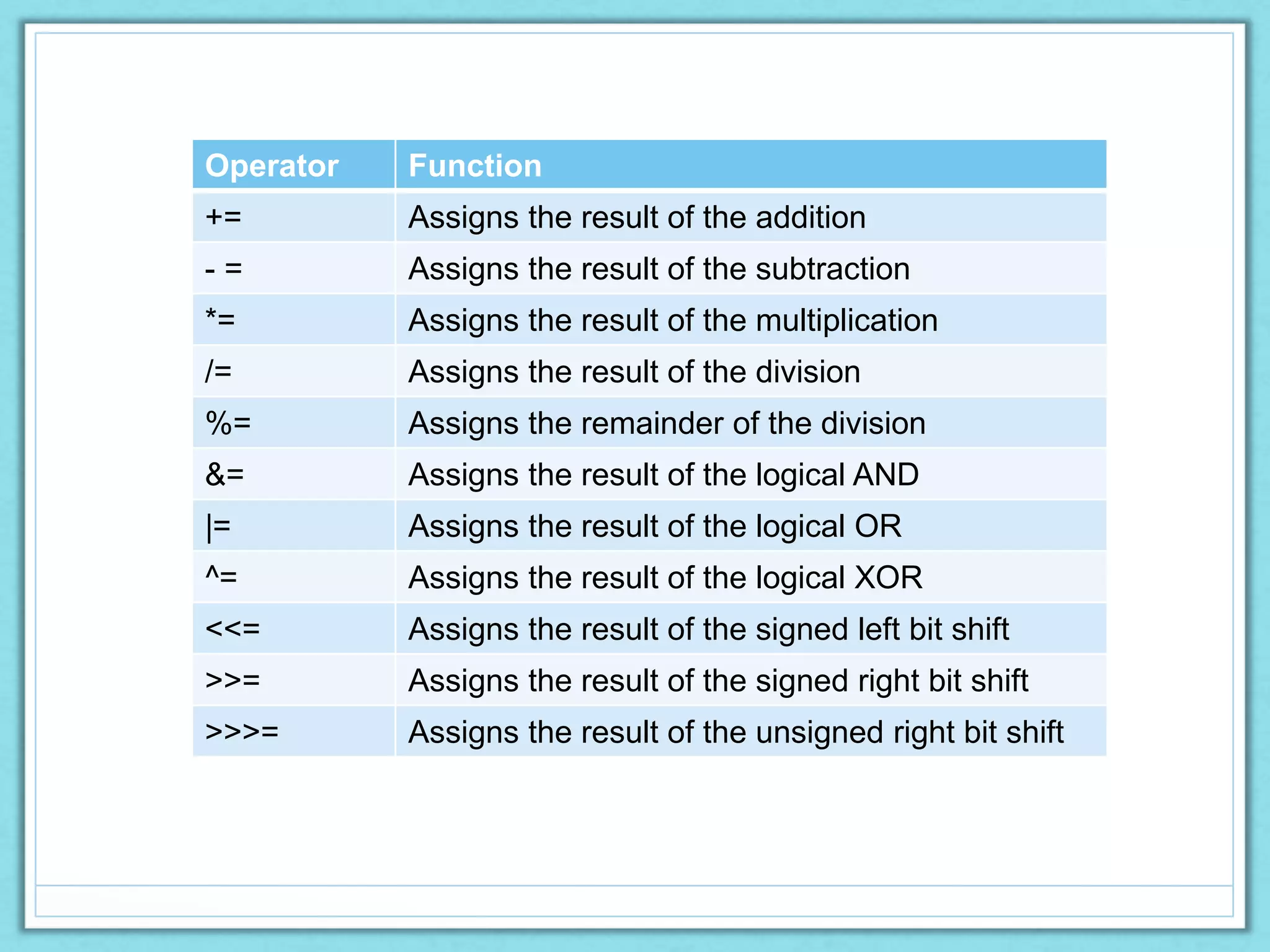
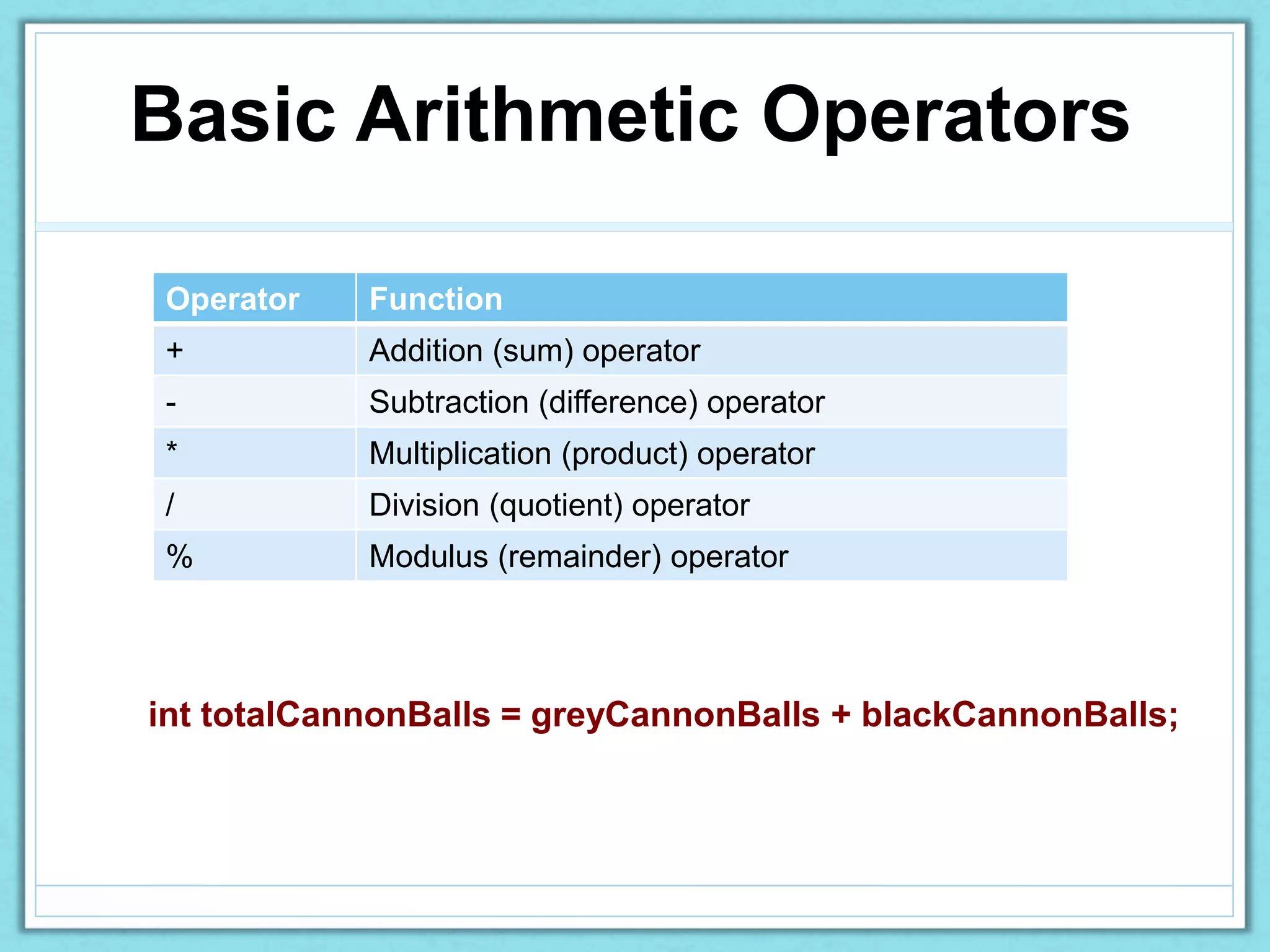
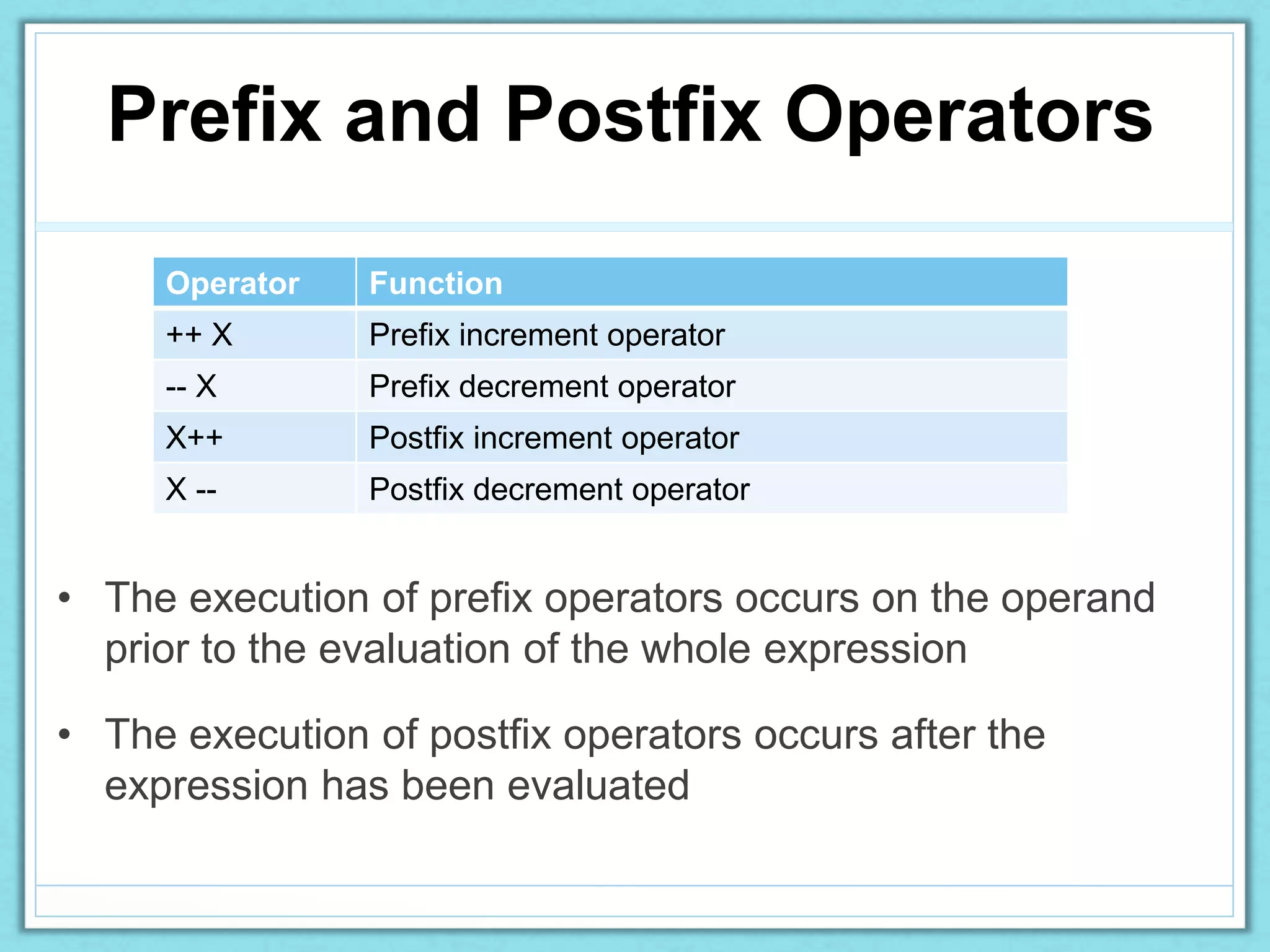
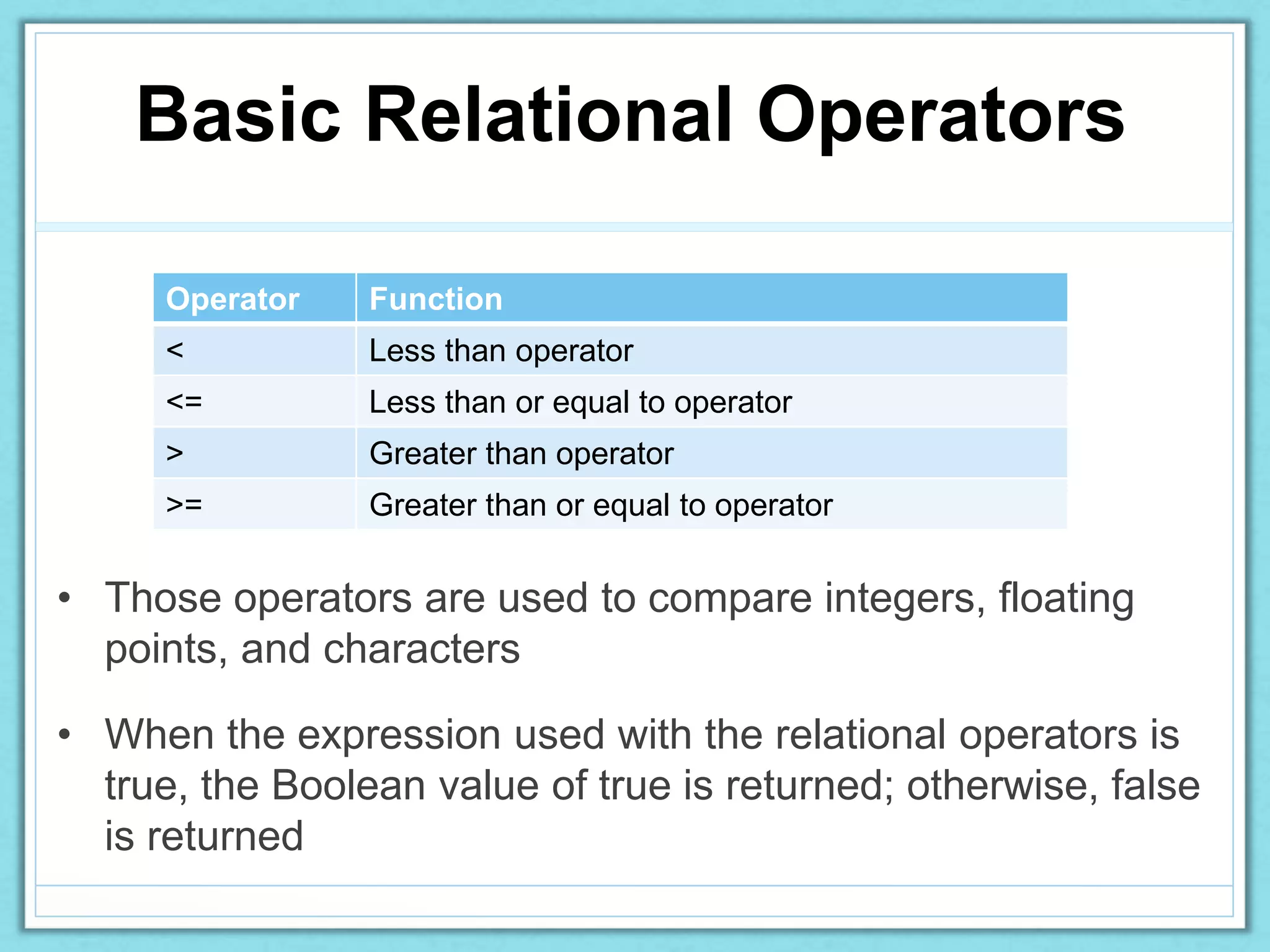
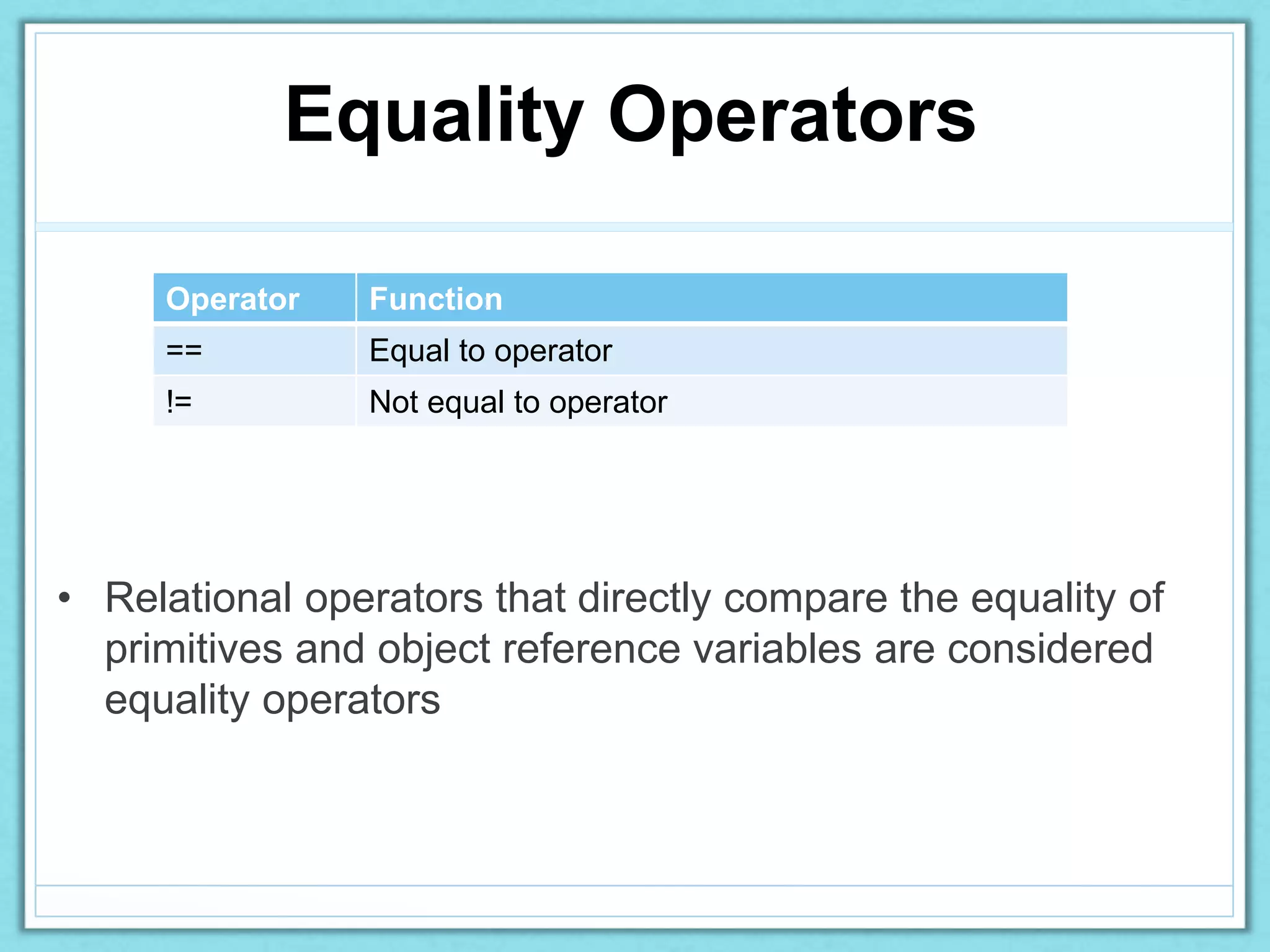
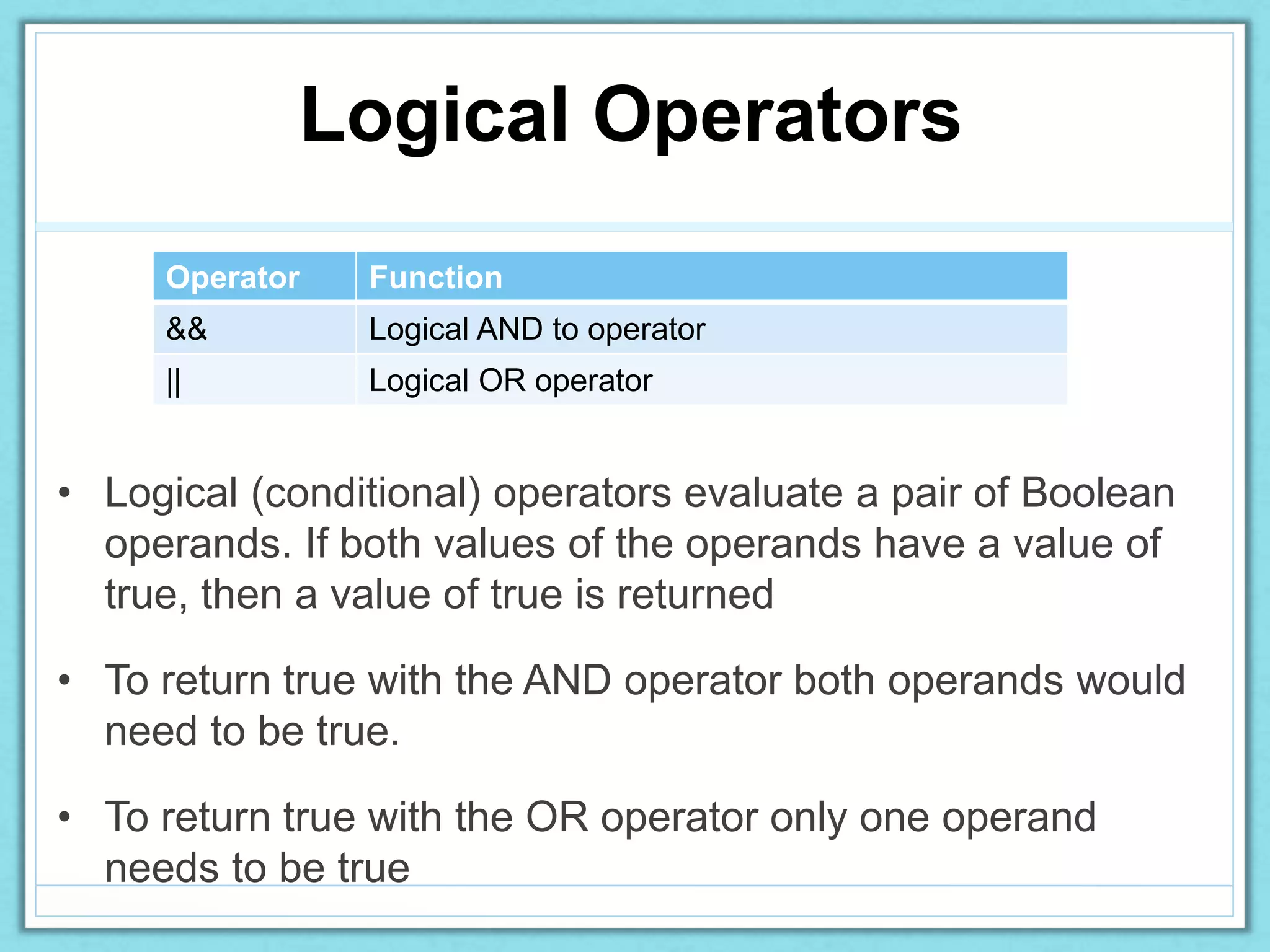
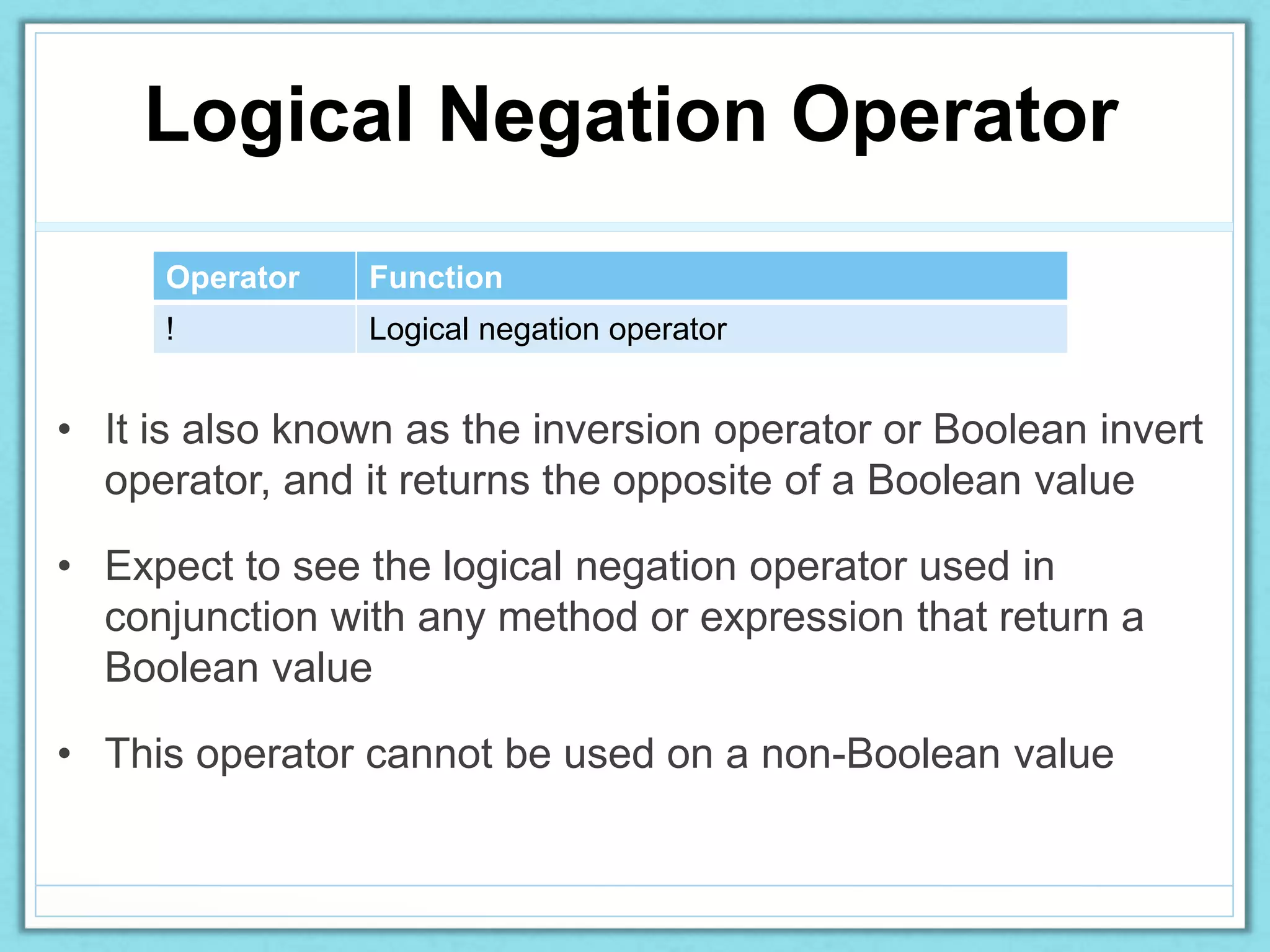
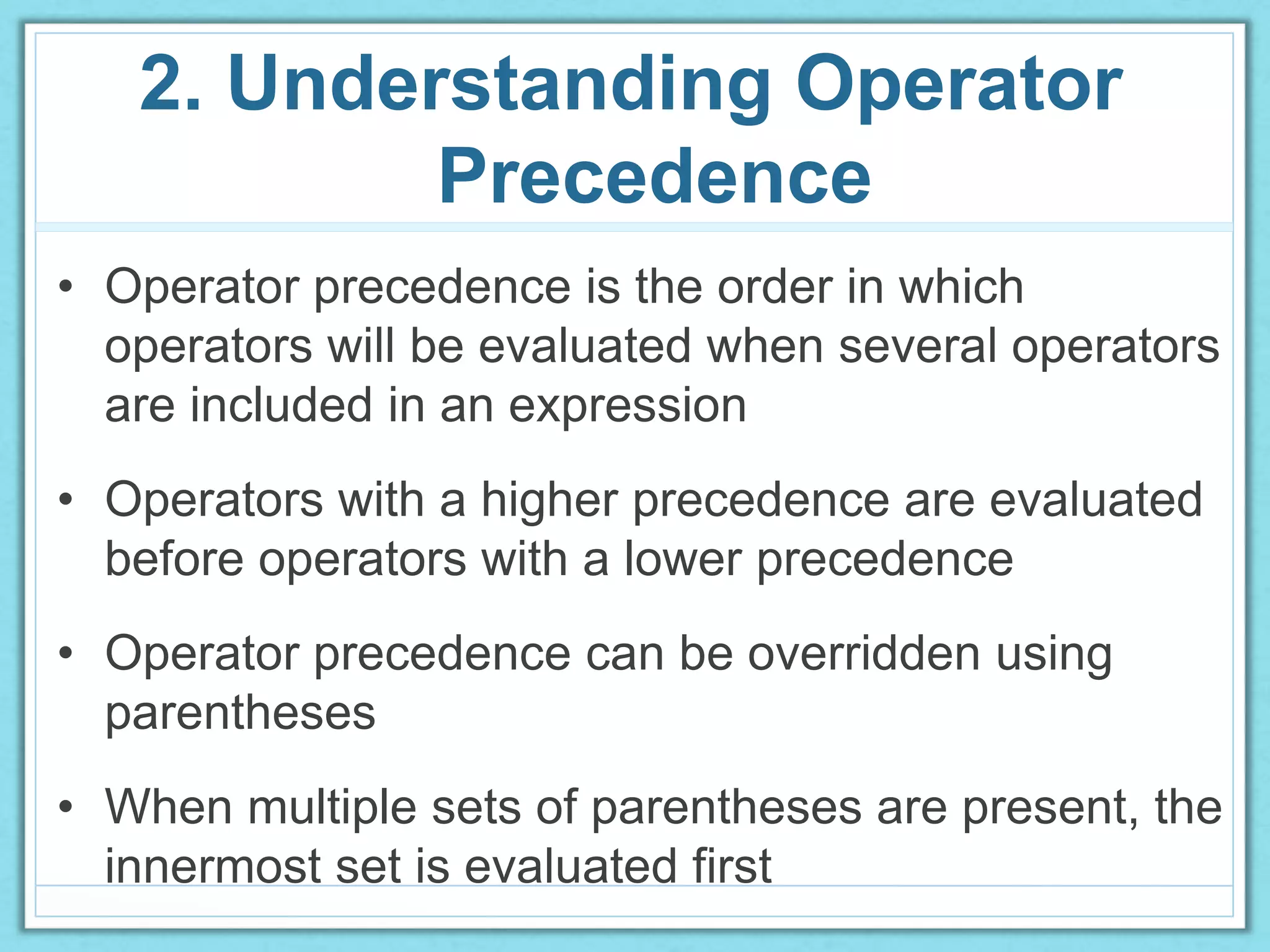
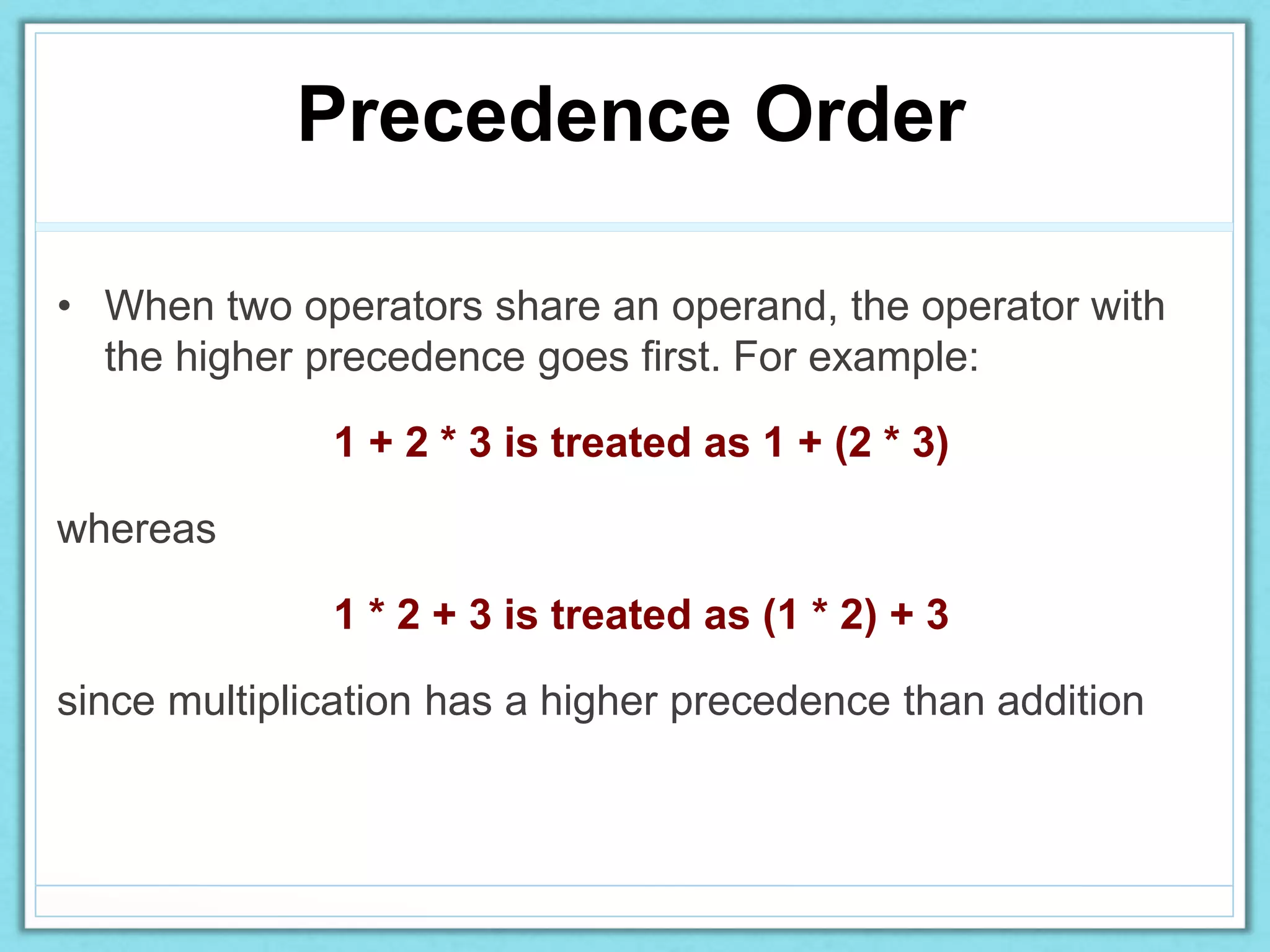
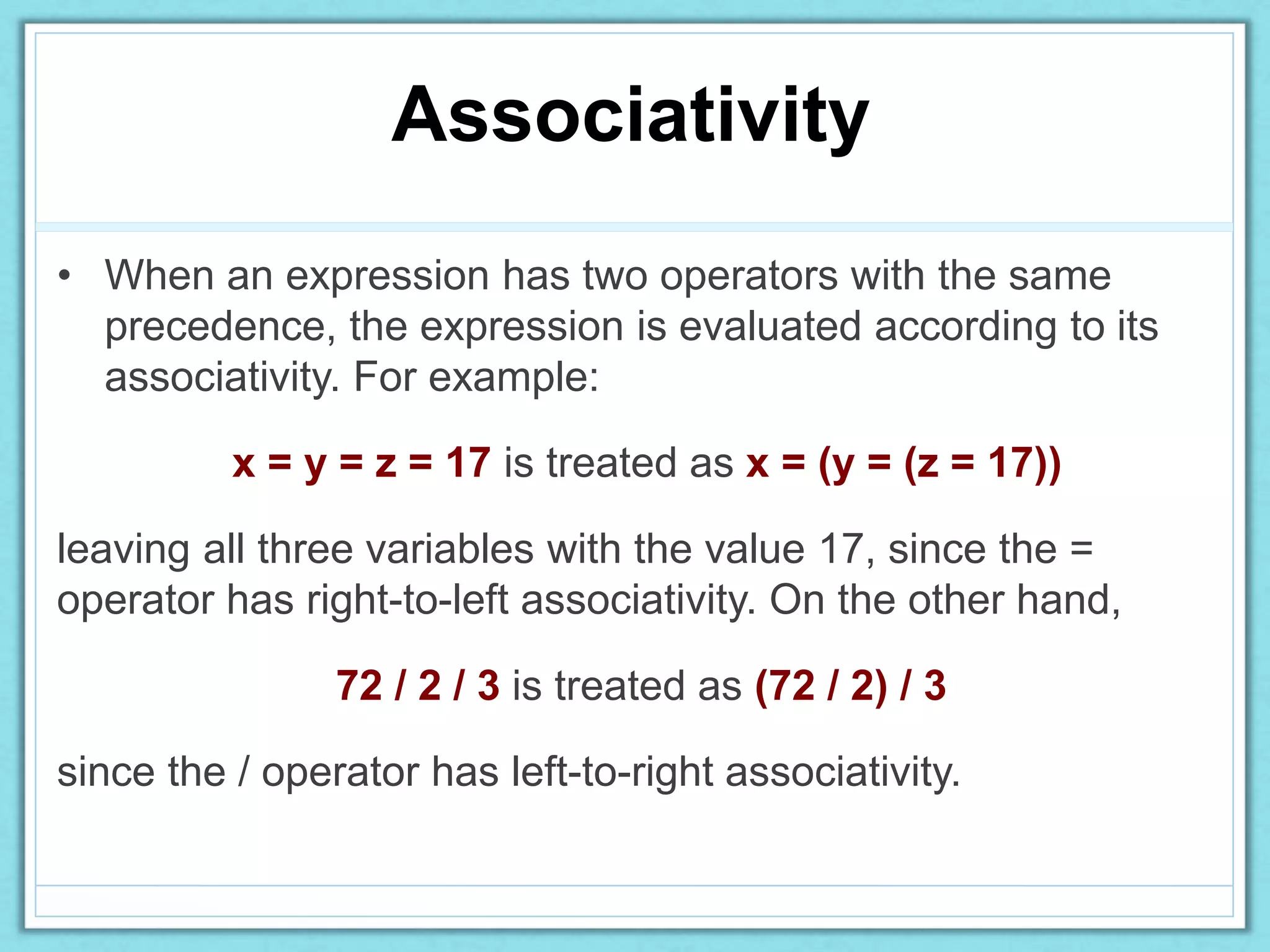
![Precedence and Associativity
of Java Operators
Operator Description Level Associativity
[] Access array element 1 Left to right
. Access object member
() Invoke a method
++ Post-increment
-- Post-decrement
++ Pre-increment 2 Right to left
-- Pre-decrement
+ Unary plus
- Unary minus
! Logical NOT
~ Bitwise NOT](https://image.slidesharecdn.com/3-programmingwithjavaoperators-150202170137-conversion-gate02/75/OCA-JAVA-3-Programming-with-Java-Operators-16-2048.jpg)
